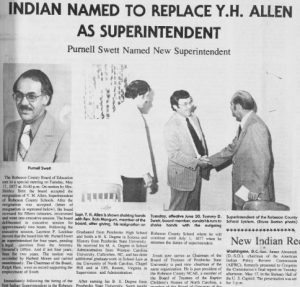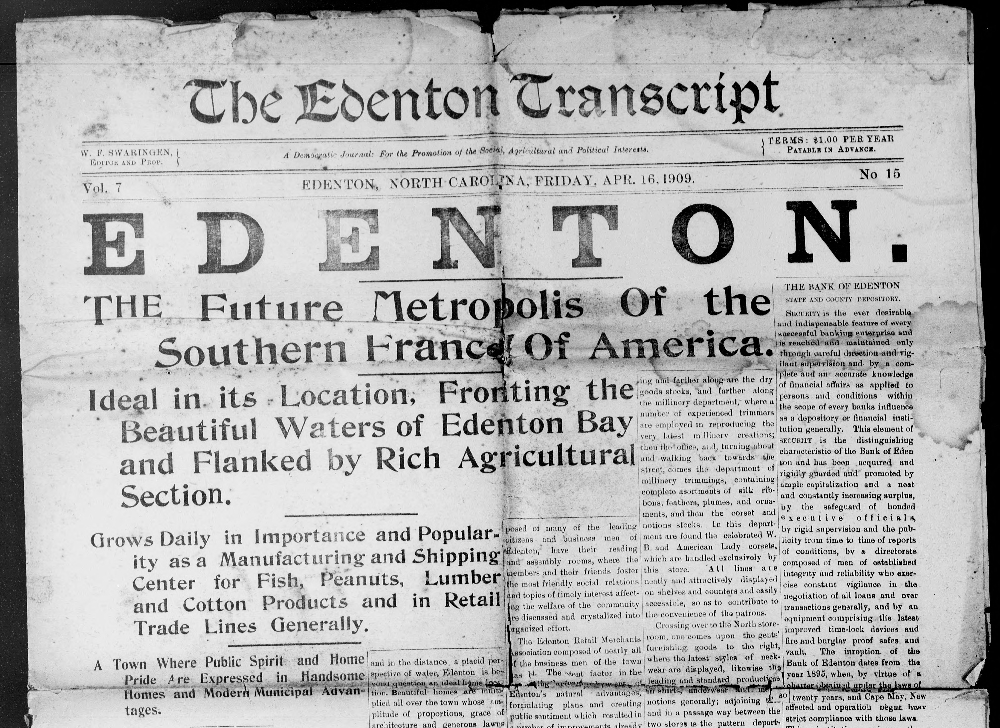
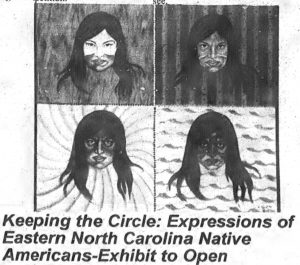
Headline from the September 24, 1998 issue of The Carolina Indian Voice.
Almost ten years of The Carolina Indian Voice, a newspaper out of Pembroke, North Carolina, are now up on DigitalNC thanks to our partner the University of North Carolina at Chapel Hill. The Carolina Indian Voice was established in 1973 and was published on a weekly basis until 2005. Issues from 1996-2005 are now available digitally. The paper primarily served the interests of members of the Lumbee Tribe living in Robeson County, who make up more than a third of the population of Robeson County and almost 90% of the town of Pembroke.
The paper includes articles and editorials concerning local issues such as politics, social events, civic projects, and more. Although there is a strong focus specifically on issues relevant to members of the Lumbee Tribe, the paper also covers news and events pertaining to American Indians throughout the state of North Carolina and nationally.
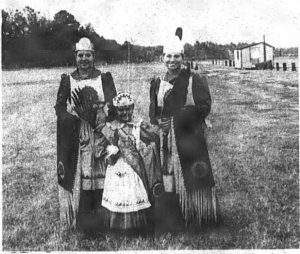
Image from the 1998 First Annual Fall Pow Wow in Hoke County as seen in the November 11, 1998 issue of The North Carolina Indian Voice.

Headline from the February 25, 1999 issue of The North Carolina Indian Voice.
The paper also focuses on advocacy with many articles covering struggles against the discrimination American Indians face regarding employment, education, and housing in the United States.
To browse through issues of The North Carolina Indian Voice click here. To see more materials from our partner, the University of North Carolina at Chapel Hill, visit their partner page.
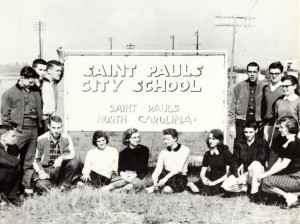 Yearbooks contributed by the Robeson County Public Library are now available on DigitalNC. The schools were in Bladen and Robeson Counties.
Yearbooks contributed by the Robeson County Public Library are now available on DigitalNC. The schools were in Bladen and Robeson Counties.
You can view our entire yearbooks collection online.
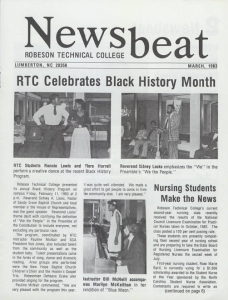

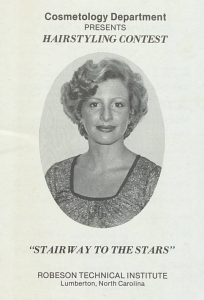
Featured Left to Right: Newsletter from Robeson Technical Institute, 1983; Program Promotion Poster, 2000; Program from Cosmetology Department Event, 1978
More than one hundred new items from Robeson Community College are now available on DigitalNC. Formerly known as Robeson Technical College, the college’s latest contributions include a wide assortment of newsletters, programs, advertisements, maps, posters, and images. These document the activities in and around the campus community from the late 1970’s to present.
These items could be useful for anyone interested in Community College programming, which might be helpful for researching small or local economies. They could also be useful for those interested in genealogy research in the Lumberton, N.C. area or Robeson County.
To see all the contributions from Robeson Community College, please visit their contributor page or the their website. To see all of the other campus publications and yearbooks from North Carolina hosted on DigitalNC, please visit the North Carolina Yearbooks Collections.
Student yearbooks from the University of North Carolina at Pembroke are now available online on DigitalNC.org. UNC-Pembroke traces its founding to 1887 when the Croatan Normal School was established in Robeson County. College courses were added in the 1920s and the first four-year degree was given in 1940. Until 1953 it was the only state-sponsored four-year college for Native Americans in the country. Pembroke State University joined the University of North Carolina system in 1972 and changed its name to the University of North Carolina at Pembroke in 1996.
The yearbooks presented on DigitalNC are from the collections of the Mary Livermore Library.
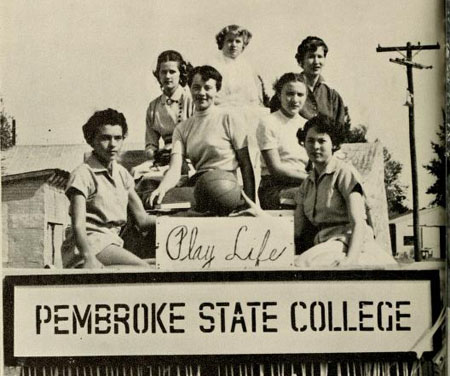

This week we have another 61 titles up on DigitalNC, including our first additions from Charleston, Culler, Red Springs, Rutherfordton, and Sanford! Included in this batch, on the front page of the February 28, 1872 issue of Raleigh’s Weekly Sentinel, is an article detailing the final heist of Robeson County folk hero Henry Berry Lowry.
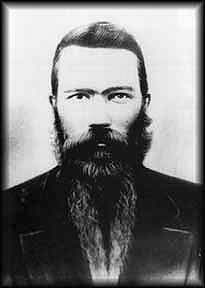
Portrait thought to be of Henry Berry Lowry. Via the State Archives of North Carolina
Henry Berry Lowry, a Lumbee Native American, was the head of the mostly Native outlaw group known as the Lowry Gang. In addition to typical outlaw activities, the Lowry Gang also helped other Native Americans avoid Confederate work conscription and fought alongside Union soldiers who had escaped Confederate prison camps. While Lowry did often resort to murder to settle personal feuds, he was also considered a sort of Robeson “Robin Hood.” When they committed robberies, they would often share the spoils with the community and would return items such as horses as soon as they were no longer needed. They were known to be “respectful” robbers and would let you off the hook if you could show you didn’t have much.
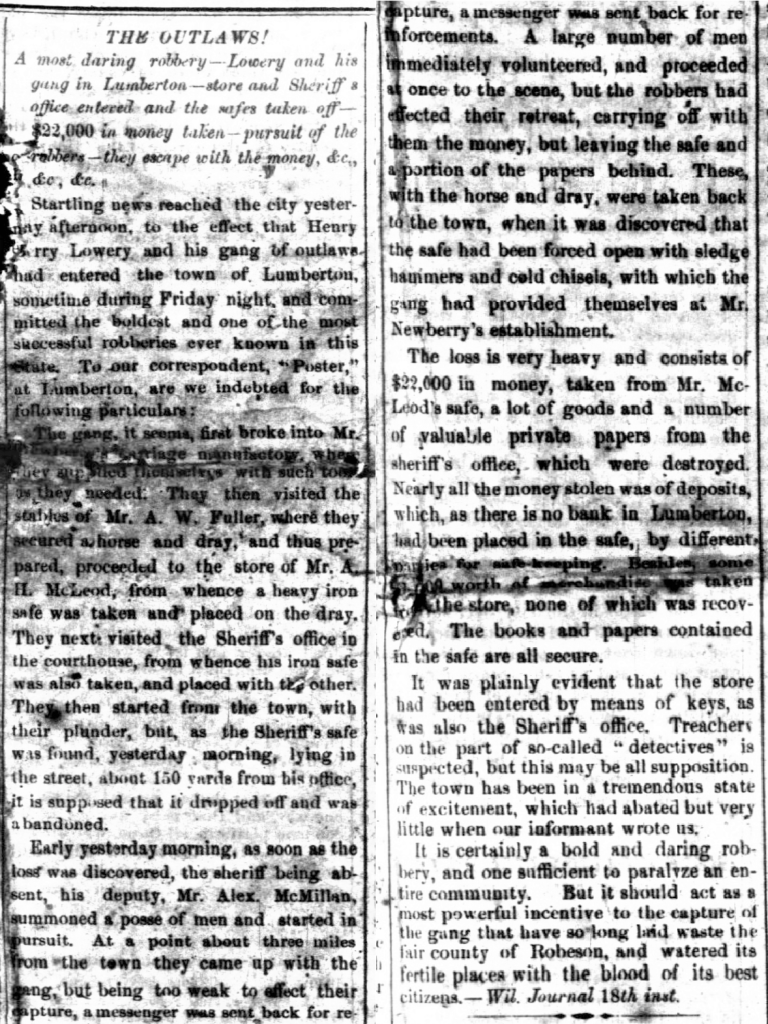
The Weekly Sentinel, February 28, 1872
In 1869, governor William Holden put a $12,000 bounty on Lowry’s head, which resulted in bloody conflict over the next few years. After successfully evading capture, Lowry planned his final heist in February of 1872. The gang stole a safe from a local carriage manufacturer and were bold enough to take another from the sheriff’s office, walking away with $22,000 (about $520,000 today) and then he disappeared. The bounty was never collected and he was never heard from again. Some locals claim they saw him at a friend’s funeral years later, but we will likely never know what happened to Henry Berry Lowry.
Over the next year, we’ll be adding millions of newspaper images to DigitalNC. These images were originally digitized a number of years ago in a partnership with Newspapers.com. That project focused on scanning microfilmed papers published before 1923 held by the North Carolina Collection in Wilson Special Collections Library. While you can currently search all of those pre-1923 issues on Newspapers.com, over the next year we will also make them available in our newspaper database as well. This will allow you to search that content alongside the 2 million pages already on our site – all completely open access and free to use.
This week’s additions include:
Asheboro
Charleston
Charlotte
Culler
Elizabeth City
Goldsboro
Greensboro
Halifax
Hertford
North Wilkesboro
Oxford
Plymouth
Raleigh
Red Springs
Reidsville
Rockingham
Rutherfordton
Salisbury
Sanford
Shelby
Tarboro
Taylorsville
Wadesboro
Warrenton
Washington
Winston-Salem
If you want to see all of the newspapers we have available on DigitalNC, you can find them here. Thanks to UNC-Chapel Hill Libraries for permission to and support for adding all of this content as well as the content to come. We also thank the North Caroliniana Society for providing funding to support staff working on this project.
DigitalNC is happy to announce a new batch of digitized newspaper issues from The Carolina Indian Voice. This round of issues includes most of 1976, all of 1977, and fill-ins for the years 1979-1996. These additions have brought us that much closer to a complete online collection of The Voice. We would like to thank our partners at the University of North Carolina at Chapel Hill for providing the physical issues that made this possible.
Established in 1973 and running until 2005, The Carolina Indian Voice published weekly on Thursdays. The Voice was based out of Pembroke, North Carolina, seat of the Lumbee Tribe of North Carolina. As the majority of Pembroke and Robeson County residents are of Lumbee ancestry, The Voice focused on local issues and events that spoke to the interests of the Indigenous community. With taglines such as “Dedicated to the Best in All of Us” and “Building Communicative Bridges in a Tri-Racial Setting”, many articles from ’76 and ’77 focus on advocacy and race. Headlines include local election coverage and racially conscious endorsements for representatives as well as pointed opinion pieces from founder and editor Bruce Barton on topics such as racial injustice.

The Carolina Indian Voice, August 12, 1976. This advertisement implores citizens to vote for representatives according to the population’s demographics for the Robeson County School District Board of Education election to correct long standing racial injustices; “six (6) Indians, two (2) Blacks, and one (1) White”.
The Carolina Indian Voice provides a necessary Indigenous perspective to life in North Carolina. To browse through all currently digitized issues of The Voice, click here. And to see more materials from our partner the University of North Carolina at Chapel Hill, visit their partner page here.
Thanks to our partner, the University of North Carolina at Pembroke, catalogs from the school and its precursors are now available on our website. The catalogs are from 1906, when the school was called the Croatan Normal School, to 2013, when it was known as it is now as UNC-Pembroke.
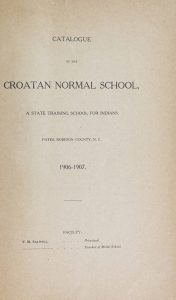
The title page of the 1906 catalog for the Croatan Normal School.
The school was originally established in 1887 as the Croatan Normal School as a result of legislation that passed in response to a petition by Native Americans of the area. This original school was established for the training of Native American teachers in Robeson County. In 1909 the school was moved to Pembroke and in 1911 the name was changed to the Indian Normal School of Robeson County. Then, in 1913, the name was changed again to the Cherokee Indian Normal School of Robeson County. In 1933, junior college coursework was added to the school’s curriculum and in 1939, four-year degree programs were instituted. In 1941 the name was changed again to the Pembroke State College for Indians. In 1945, enrollment was opened to people from all government-recognized groups of Native Americans, rather than just the Native Americans from Robeson County. In 1953, white students began to be admitted to the school and in 1969, the name was changed to Pembroke State University. In 1972, the University of North Carolina system was established, with Pembroke State University as one of the sixteen campuses included. In 1996, the school became The University of North Carolina at Pembroke, as it is known today.
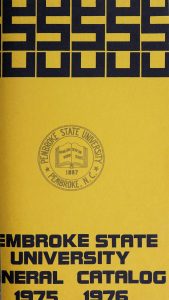
The cover of the Pembroke State University course catalog from the 1975-1976 academic year.
We’ll be working with the University of North Carolina at Pembroke to fill in additional catalogs over the coming months. We’ve also worked with them to scan their yearbooks, and you can see those on their contributor page. For more information about the university, visit their website.

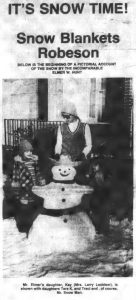
A snow celebration in the February 22, 1979 issue
Almost two decades of the newspaper The Carolina Indian Voice, from 1977-1996, are now up on DigitalNC. Provided by our partner, UNC at Chapel Hill, this batch joins previously digitized issues that date from 1996-2005. The Carolina Indian Voice was established in 1973 and continued through 2005, so now nearly the entire print run is digitized.
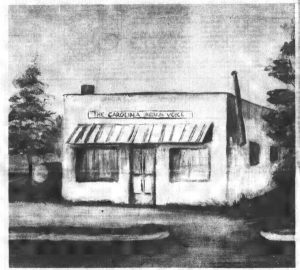
A painting of the Carolina Indian Voice building as shown in the January 10, 1980 issue
The Carolina Indian Voice is one of North Carolina’s oldest American Indian newspapers. It served members of the Lumbee Tribe living in Robeson County including the town of Pembroke, which is the seat of the Lumbee tribe of North Carolina, as well as the home of The University of North Carolina at Pembroke, a historically American Indian University.
The Carolina Indian Voice was published weekly on Thursdays and was a source for all sorts of local news. Topics covered included local politics and civic issues, cultural events, school happenings, and more. Articles on local and national civil rights issues and efforts to end racial discrimination pertinent to Robeson County’s American Indian population were also covered alongside everyday happenings in the county.

An article on H.R. 12996 regarding federal recognition of American Indian tribes in the August 24, 1978 issue
Click here to take browse through the digitized issues. To see more materials from our partner UNC at Chapel Hill, visit their DigitalNC partner page or take a look at their website.
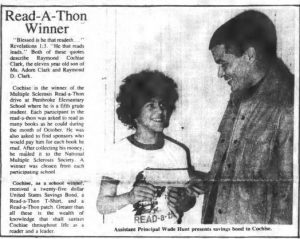
The fifth grade winner of the Pembroke Elementary Read-A-Thon in the December 8, 1977 issue
We’ve just added newspaper issues from 37 titles, dating from 1819-1968, with the majority dating from the late 19th and early 20th centuries. From a variety of cities, most of these additions are only 1-5 issues per title. Thanks to the State Archives of North Carolina and its preservation of newspapers, we’re pleased to include these fill-in issues. The State Archives provided them to us as part of their newspaper microfilming workflow.
Below is a list of titles, their cities of publication, and the years from which the issues date.
- Southern Citizen, Asheboro – 1873
- The Asheboro Courier, Asheboro – 1888
- Bayboro Sentinel, Bayboro – 1902
- Beaufort Halcyon, Beaufort – 1855
- The Carteret County Telephone, Beaufort – 1882, 1884-1885
- The Weekly Record, Beaufort – 1886
- The Tobacco Plant (Durham), Durham – 1872, 1882-1883
- The Durham Daily Globe (later the Herald-Sun), Durham – 1891
- The Edenton Transcript, Edenton – 1908-1909
- The Albemarle Observer, Edenton – 1911
- The Edenton News, Edenton – 1922
- The North Carolinian, Fayetteville – 1856-1857
- Western Reporter, Franklin – 1880
- Our Farms, Franklinton – 1896
- Weekly Message (later The Olive Branch), Greensborough – 1855
- The Gold Leaf, Henderson – 1885
- The Herald of Truth, Hendersonville – 1855
- The High Point Enterprise, High Point – 1968
- The Lincoln Courier, Lincolnton – 1867
- The Visitor (paper of the Littleton Female College), Littleton – 1902
- The Littleton Dispatch, Littleton – 1928
- The Franklin Times , Louisburg – 1879
- The Robesonian, Lumberton – 1872, 1876-1877, 1880-1881
- Milton Intelligencer, Milton – 1819
- The Milton Chronicle, Milton – 1860, 1883
- The Monroe Enquirer, Monroe – 1881
- The Norlina Headlight, Norlina – 1919
- The Granville Free Lance, Oxford – 1880
- The Oxford Torchlight, Oxford – 1881
- Spirit of the Age Raleigh – 1855
- The Spy, Raleigh – 1875
- North Carolina Spectator and Western Advertiser, Rutherfordton – 1834
- The Rutherford Banner, Rutherfordton – 1888
- The Democrat, Rutherfordton – 1895
- The Sun, Rutherfordton – 1918-1919
- North Carolina Argus, Wadesboro – 1855
The State Archives has an exhibit of Early North Carolina Newspapers here. Their microfilming efforts are behind almost all of the digitized microfilmed papers available through DigitalNC. Search or browse all of our newspapers on the newspaper landing page.
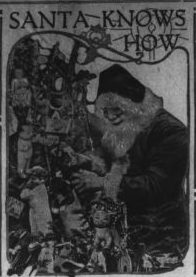
Thanks to our partner, University of North Carolina at Chapel Hill, new issues from five North Carolina newspapers are available on our website. These include:
There are also new issues of Oxford Public Ledger, courtesy of our partner Granville County Public Library, and The Yadkin Ripple, thanks to Yadkin County Public Library.
To browse all of our newspapers by location, date, and type, take a look at our North Carolina Newspapers collection.













